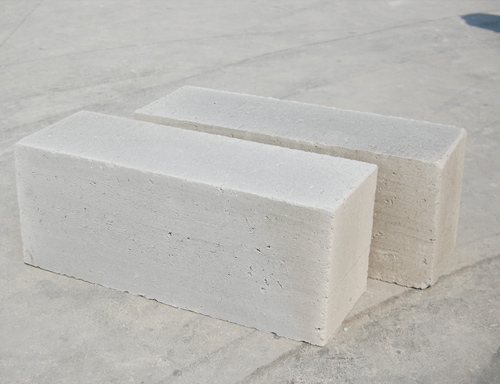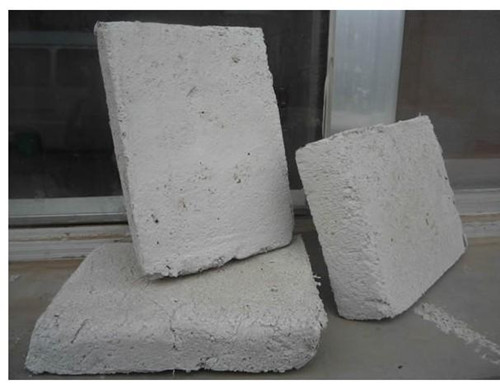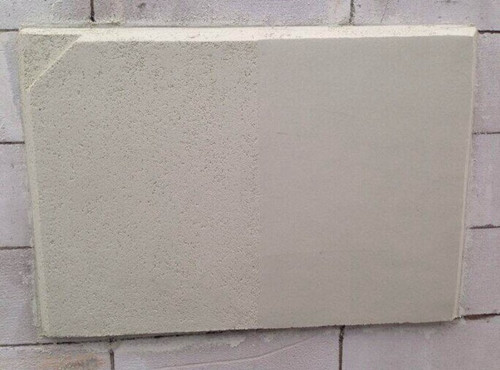The use of insulation materials by builders for thermal insulation is one of the effective energy-saving measures. Since the external wall of the building accounts for about 40% of the total construction area, the use of energy-saving and heat-insulating materials in the external walls of buildings can effectively Reduce the energy consumption of buildings and play a good thermal insulation effect. Therefore, it is a long-term task for the sustained and healthy development of building insulation and energy conservation. In energy conservation testing, it is necessary to raise awareness, implement strict monitoring of the whole process, and promote inspection of wall thermal insulation materials according to law. Next, let us work together to understand the relevant knowledge of the wall insulation material inspection .

What are the wall insulation materials
Organic insulation material
1, Extruded polystyrene board, thermal conductivity 0.030W/(m·K)
Extruded polystyrene board is also a kind of polystyrene board, but the production process is extrusion molding. Extruded polystyrene board is abbreviated as XPS board, and a rigid foamed plastic product with a closed-cell structure is prepared by adding a small amount of additives with a polystyrene resin or a copolymer thereof as a main component and heating and extrusion molding.
Extruded polystyrene board is also a combination of waterproof and thermal insulation in one, high stiffness, good compression resistance, low thermal conductivity, for roof, floor, basement wall insulation within the casing is very appropriate. However, this type of sheet has poor vapor permeability, poor dimensional stability, and poor adhesion to inorganic adhesive mortars. It is used for quality accidents such as falling off of common systems and cracking of decorative surfaces in external wall thermal insulation, because the cost is not cheap. , The material in the field of external insulation applications and expansion of polystyrene board advantage. Not recommended for use in exterior wall insulation systems.
2. Expanded polystyrene board, thermal conductivity 0.039W/(m·K)
The full name is an expanded polystyrene board, which is a closed-cell structure polystyrene foam sheet prepared by heat-foaming expandable polystyrene beads heated in a mold.
This is the most widely used thermal insulation material in thermal insulation materials. It is often applied thin plastering system, thermal insulation decoration integration system, large mold built-in system, steel wire grid frame system, etc. The material is in the thermal insulation system market both at home and abroad. It is undeniable that this is the most mature product used in the external wall insulation system, so that all newly-born materials will use this to refer to the PK to set off the various households.
3, rock wool board, thermal conductivity 0.040W / (m · K)
Rock wool board refers to a kind of mineral fiber made of natural rock as the main raw material, which is melted by high temperature melting and centrifuged to blow. It is made of water-repellent type after being mixed and cut with a certain proportion of binder and additive. Insulation plate.
Rock wool board insulation is the second most widely used in Europe after polystyrene board insulation. It is mainly used in high-rise buildings where fire protection requirements are high. In China, mineral wool board insulation has been widely used in the interior of dry hanging curtain walls. The application of thin plastering systems has just begun. Rock wool board belongs to the material with high water absorption. In the hot summer and cold winter areas in China, due to the heavy rainfall in the rainy season and high air humidity, the rock wool board insulation system will be damp and the heat insulation performance will be reduced. For areas with little rain in the north, rock wool boards are good external insulation materials for fire protection.
4, foamed polyurethane, thermal conductivity 0.024W/(m·K)
The best performance of a single organic insulation material is polyurethane insulation. In accordance with the process is divided into on-site foaming polyurethane and factory prefabricated rigid foam polyurethane board.
The on-site foamed polyurethane is a two-component, two-component additive consisting of isocyanate, polyhydric alcohol (combined polyether or poly-Cool) as the main raw material, and is sprayed with a rigid foam material with heat insulation and waterproof function.
The on-site foamed polyurethane has very good integrity and waterproofness. Therefore, it is very suitable for thermal insulation and waterproofing of roofs, insulation and waterproofing in the basement walls of basements, and is suitable for insulation in dry hanging curtain walls. The prevention of thermal bridge effect. Polyurethane foam board is derived from the product, due to poor dimensional stability, there is not much difference between the relative expansion of polystyrene board. Some manufacturers provide composite polyurethane grade A sheets and test reports with double-sided smearing, which can be used as a fire-retardant insulation material for a period of time. After the introduction of new fire inspection standards, this type of material will not be recognized.
5, phenolic board, thermal conductivity 0.032W / (m · K)
The phenolic board is a porous type phenolic foam board made of a polycondensate of phenol and formaldehyde (phenolic resin) and other additives such as a curing agent, a foaming agent, a surfactant and a filler. Foreign production of phenolic board has good insulation properties, and its thermal conductivity is lower than that of extruded polystyrene board. Japan's national sandwich insulation system uses a large number of phenolic boards. However, at present, domestic efforts to promote small, production technology is also relatively backward, its insulation properties slightly worse than foreign products.
The domestic production of phenolic plates has weaknesses such as easy powdering, low mechanical strength, brittleness, non-extensibility, and high water absorption. For external wall external insulation thin plastering systems, there will be serious quality defects such as cracking and falling off of the finish. In view of this, Jiangsu Province has also issued a summary of expert meetings, and it is not recommended to use phenolic sheets in exterior insulation systems.

Inorganic insulation material
1. Polystyrene particles thermal insulation mortar, thermal conductivity 0.058W/(m·K)
Polystyrene particles are expanded polystyrene foam particles referred to as expanded polystyrene particles or polyphenylene particles, and expandable and foamable using expandable polystyrene resin as a base material. Polystyrene pellet insulation mortar is composed of mortar and polyphenylene granules and has a polyphenylene granule content of not less than 80%. This is an early product of domestic product standards, a larger range of applications in the domestic South. However, the insulation performance is poor and the water absorption rate is also high. Does not apply to building insulation projects with high energy requirements.
2, inorganic thermal insulation mortar, thermal conductivity 0.050W/(m·K)
It is made of vitreous volcanic lava ore by expansion, vitrification and other processes, the surface is vitrified closed, irregular spherical, and the inside is a porous cavity structure of inorganic particles. Expanded glass beads insulation mortar is a mixture of expanded glass beads, inorganic gelling materials, additives, fillers and other premixes. The YT inorganic active wall thermal insulation material produced by Nanyang Zhongxing Yintong Company adopts the domestically-original non-network insulation technology, which has good heat preservation effect, and does not need grid cloth, rivets, and crack-resistance mortar and trowel mortar, and mix with water. After the uniform coating, the wall is directly applied. The outside of the insulation layer can be directly covered with tiles or painted. The construction process is simple and the construction period is greatly shortened. Class A is non-flammable and has a high temperature resistance of 1500°C. Anti-cracking, anti-air drum. With the wall life. Comprehensive cost-effective superiority.

Wall insulation material inspection
The inspection items of the wall thermal insulation material include the material's combustion performance (vertical combustion, ignition temperature, oxygen index, horizontal combustion, incandescent rods), thermal properties (heat distortion temperature, thermal decomposition temperature, Vicat softening point, high and low temperature impact, glass Chemical transition temperature, melting temperature), applicability (electrical conductivity, corrosion resistance, low temperature resistance, hydraulic pressure resistance, insulation performance, moisture permeability) and physical properties (apparent density, light transmittance, haze, yellow index) , whiteness, swelling ratio, water content, acidity hardness)
External wall insulation materials, density, thermal conductivity, compressive strength, bond strength, bonding material detection technology and the reinforcement network of corrosion resistance, mechanical properties of the detection technology is the main external wall insulation materials detection technology.
However, there are also some problems in the detection of external wall thermal insulation materials: First, the testing standards are different. The detection parameters and judgment indexes of local standards and national standards are different, which increases the difficulty of actual operation. The second is that the detection methods are numerous and difficult to determine. At the present stage when testing of thermal insulation materials is being carried out, the detection methods of local, national and industrial industries are numerous and difficult to determine. Third, the testing equipment for building wall energy-saving and heat-insulating materials is not complete. Fourth, there is no specific specification for the test report format for energy-saving insulation materials.
Editor's summary: The above is a description of what the relevant knowledge of the wall insulation material inspection project contains. In order to solve these problems, we must improve our own energy-saving standards and use more advanced equipment to enhance the actual operation. For more information, please continue to pay attention to our website, follow-up will show more exciting content. You can also buy your favorite products on Qijia Mall.
Living room glass partition wall balcony wall decoration loft bedroom partition wall model sofa wall background wall wall shelf wall insulation material inspection
Fiber optic waterfall lighting is a new creative lighting.It is un-replaceable because of its special design and lighting effect.
It is widely used in hotel, night club,wedding,bar, entertainment center and home decoration etc.
Sparkle Fiber Optic,it is processed from plastic bare fiber optic,widely used at Led fiber optic curtain, fiber optic chandelier, and something other place
Fiber Optic Waterfall,Fibre Optic Waterfall,Led Fiber Optic Curtain,Fiber Optic Wall
Jiangxi Daishing POF Co.,Ltd , https://www.jxopticfibrelight.com